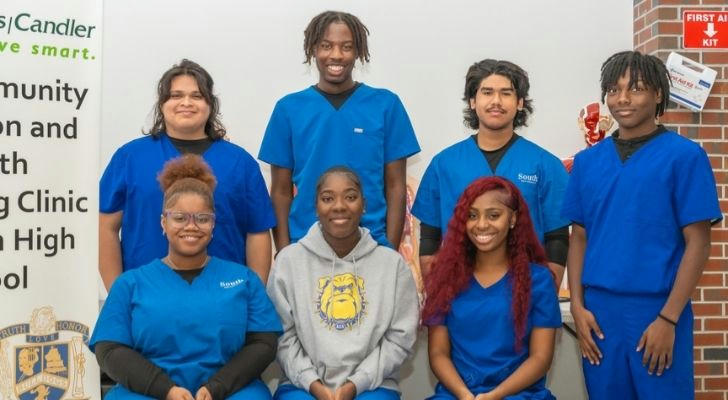No Experience? No Problem! Is Phlebotomy Certification Right for Career Changers?
Switching careers can be overwhelming—especially if you've been out of school for years or feel like the job market has left you behind. But what if there was a hands-on, fast-track option into the medical field that didn’t require a college degree or prior experience? Welcome to the world of phlebotomy.

Phlebotomy technicians (or “phlebotomists”) are certified professionals trained to draw blood for lab tests, transfusions, or donations. It’s a role in high demand, especially as America’s healthcare system continues to expand. Even better? It’s one of the few healthcare certifications where prior experience isn’t required—and where career changers often thrive.
Why Career Changers Succeed in Phlebotomy
Unlike traditional medical careers that demand years of school, phlebotomy certification can be completed in a matter of weeks. Many second-career professionals find success in this field because it combines technical skill with human connection—traits developed across a lifetime in other industries.
Take Sandra, a former retail manager from Ohio. After being laid off during the pandemic, she enrolled in a 6-week phlebotomy training course offered at her local community college. With no medical background, she passed her certification exam on the first try. Within two months, she was hired by a regional hospital network and now works full-time in their outpatient lab.
What You’ll Learn—and How Long It Takes
Most phlebotomy programs in the U.S. range from 4 to 12 weeks, depending on whether you're attending part-time or full-time. These programs are often offered at:
- Community colleges
- Vocational training centers
- Private medical training institutes
Students learn everything from basic anatomy to proper blood draw techniques and patient interaction. Most programs include 30 to 40 hours of classroom instruction, followed by clinical practice to gain hands-on experience.
Once you complete your course, you’ll be eligible to sit for a national certification exam through accredited organizations like the National Healthcareer Association (NHA) or the American Society for Clinical Pathology (ASCP).
What Does It Cost—and Is Help Available?
Tuition varies by state and institution, but most programs cost between $800 to $2,500. That’s still significantly less than other healthcare certifications—and there’s often financial help available.
Government Workforce Development Grants: Many states offer subsidies through Workforce Innovation and Opportunity Act (WIOA) funding. If you’re unemployed or underemployed, you may qualify for free or reduced tuition through state-supported retraining programs.
Employer Scholarships: Some healthcare employers offer phlebotomy scholarships or tuition reimbursement programs in exchange for a work commitment post-certification. These “earn-while-you-learn” models are especially popular in hospitals facing staff shortages.
Flexible Payment Plans: Even private programs typically offer monthly installment options to make courses more affordable.

What’s the Pass Rate—and What Happens After?
National certification pass rates are high. According to the NHA, the average first-time pass rate for phlebotomy is around 85%. With focused training and support, most students are well-prepared for the exam.
Once certified, you can apply for jobs in:
- Hospitals
- Diagnostic laboratories
- Blood donation centers
- Physician offices
- Mobile testing units
Employment placement rates are also strong. For example, Pima Medical Institute reports over 80% job placement for its phlebotomy graduates within 6 months of certification. Many entry-level roles are open immediately to certified candidates.
A Realistic Path Back to the Workforce
Phlebotomy isn’t just a job—it’s a solid stepping stone. Many use it as a launching pad into other allied health careers such as:
- Medical assisting
- Laboratory technology
- Nursing
Because the field requires both attention to detail and patient care, it’s especially well-suited for those with customer service or administrative experience—making it ideal for career changers.
And since it doesn’t require ongoing licensure in most states (except California and Louisiana), phlebotomy offers low-maintenance entry into healthcare.
What Are the Risks?
Like any medical role, phlebotomy comes with potential challenges:
- Exposure to bloodborne pathogens if safety protocols aren’t followed
- Physically demanding work—long hours on your feet and repetitive motion
- Emotional pressure, especially when dealing with anxious or difficult patients
However, most programs include safety and ethics training, and ongoing support is provided in clinical roles. If you have a calm demeanor and good hand-eye coordination, the risks are manageable—and often outweighed by the reward of meaningful work.

Is This Your Next Move? Here’s How to Start
If you’re considering phlebotomy as your second career, here are five concrete steps to get started:
Research local programs at community colleges or vocational centers near you.
Check for WIOA eligibility or contact your state workforce office for training grants.
Ask about employer partnerships—some programs have direct hiring pipelines.
Attend an info session or request a curriculum outline to see if it fits your learning style.
Apply and enroll—courses fill fast, especially during peak seasons (spring and fall).
Career changes are hard—but they’re also full of possibility. Phlebotomy offers a rare opportunity to start fresh, build a secure future, and join one of the country’s most essential workforces—no experience required.
